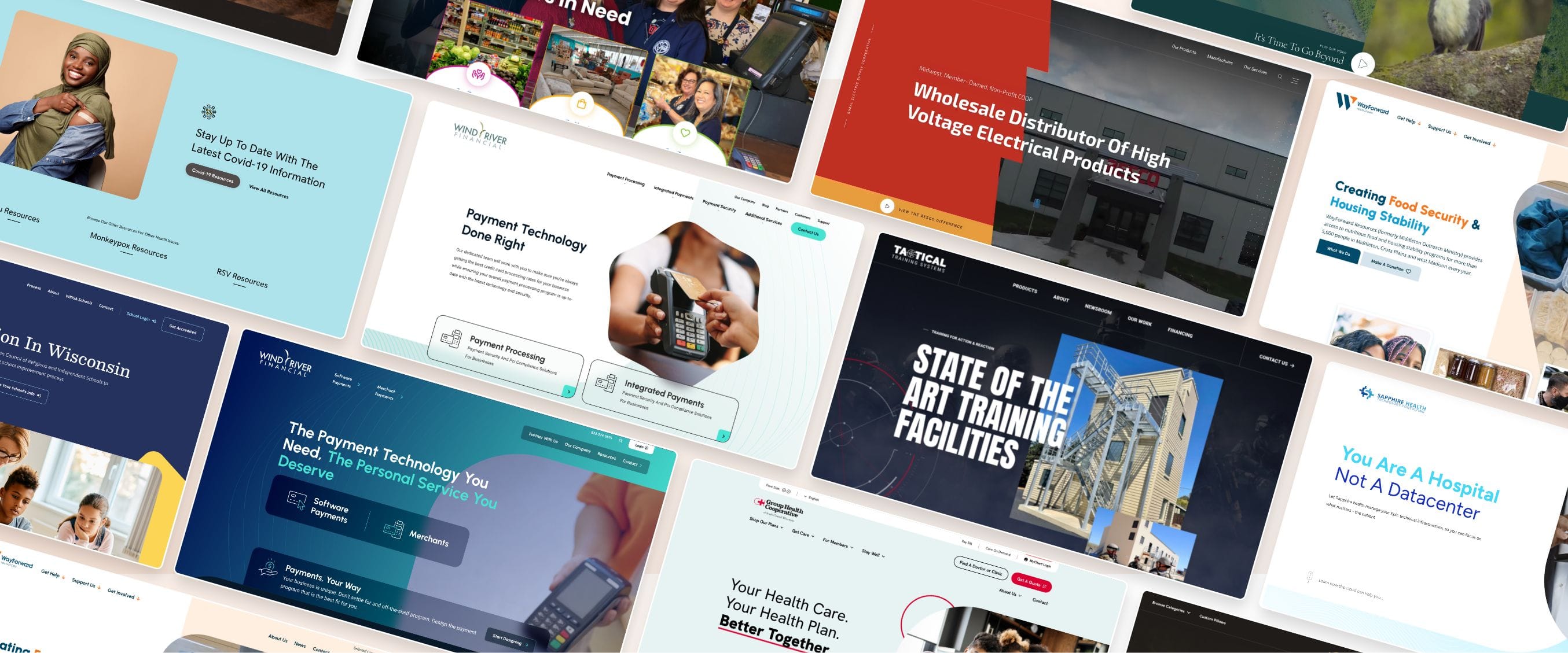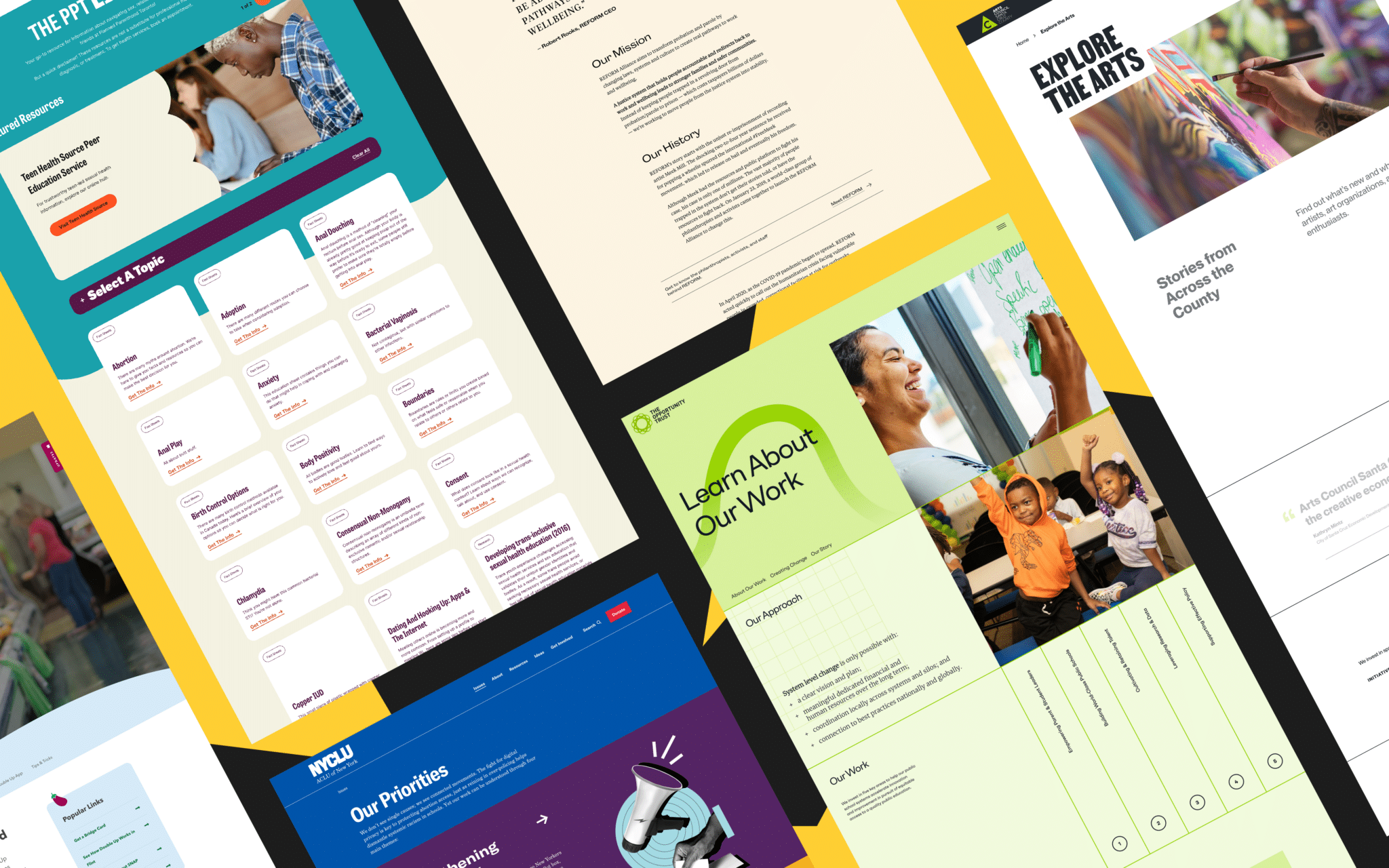The Ultimate Guide to Modern Site Design Trends
In the ever-evolving digital landscape, modern site style trends play a crucial role in forming customer experience and involvement. From the increase of minimalist layout principles that prioritize simplicity to the impact of vibrant typography in specifying brand identification, each element contributes to a cohesive on the internet existence.
Minimalist Layout Principles
Minimalist design principles emphasize the idea that much less is a lot more, supporting for simplicity and functionality in aesthetic communication. This strategy strips away unneeded components, concentrating rather on important components that share the intended message properly. By focusing on clearness, minimalist design enhances customer experience, permitting visitors to navigate websites easily.
Core tenets of minimal layout include the usage of enough white area, which develops a feeling of equilibrium and company. This unfavorable area not just guides the visitor's attention to crucial elements however additionally cultivates a calming visual ambience. In addition, a limited shade scheme is frequently utilized, utilizing monochromatic schemes or soft colors to keep aesthetic communication and protect against overwhelming the individual.
Typography plays an important function in minimalist layout, where clear typefaces are chosen for their simplicity and performance in communicating content. Inevitably, minimal design principles cultivate a focused setting that urges customers to engage with the content, enhancing the overall effectiveness of modern website design.
Vibrant Typography Selections
Embracing vibrant typography selections has actually come to be a defining characteristic of modern website layout, as it properly catches attention and shares solid messaging. Designers are significantly making use of typography not just as a functional element yet as an essential aesthetic part that enhances the general aesthetic and customer experience.

Furthermore, the association of bold typography with minimal style concepts enables striking contrasts, improving readability while preserving aesthetic allure. The usage of whitespace around bold text even more emphasizes its significance, ensuring that the message resonates with the target market.
As digital landscapes become more affordable, leveraging vibrant typography enables brands to differentiate themselves and leave a long lasting impact. The careful option of typefaces and their application can evoke emotions, establish tone, and drive activity, making bold typography an important device in contemporary web site layout. Inevitably, it is a powerful method to improve narration and guarantee that essential messages are not only seen yet also really felt.
Mobile-first and receptive Style
Mobile-first and responsive layout has actually arised as a crucial principle in contemporary site advancement, showing the enhancing dependence on mobile phones for accessing on-line web content. As user actions shifts in the direction of mobile surfing, designers should focus on creating experiences that adjust effortlessly throughout different display sizes and resolutions.
A receptive design makes sure that a website instantly changes its format, images, and performance based on the device being made use of. Mobile-first design supporters for developing internet sites initially for smaller displays, consequently scaling up to larger screens.
Implementing mobile-first and responsive principles not just caters to customer preferences however likewise straightens with seo (SEARCH ENGINE OPTIMIZATION) methods. Significant search engines, like Google, prioritize mobile-friendly websites in their rankings, making it essential for services to adopt these style methods. In an affordable electronic landscape, embracing responsive and mobile-first layout is not just an option; it is essential for ensuring availability and engagement with a varied audience.
Involving Microinteractions
Microinteractions play a pivotal duty in improving individual engagement and total website experience, especially in the context of mobile-first and receptive layout. These refined design aspects provide instant feedback to individuals, making communications extra instinctive and pleasurable. Instances consist of switch computer animations, notification notifies, and packing indicators, which not just overview individuals but additionally develop a feeling of connection with the user interface.
Including engaging microinteractions can why not find out more considerably enhance functionality by lowering cognitive tons. When individuals obtain aesthetic or acoustic responses upon executing activities, such as clicking a switch or submitting a type, they feel extra positive in their options. This promotes a smoother navigation experience, ultimately raising customer retention.

As internet site style trends remain to evolve, the value of microinteractions can not be overstated. They offer as the subtle yet effective touchpoints that transform regular interactions right into amazing experiences, thus elevating the general performance of contemporary internet layout.
Sustainable Website Design Practices
Sustainable web layout techniques are becoming progressively important as the digital landscape grows and ecological issues climb. Developers and designers are acknowledging their responsibility to develop web sites that not just offer individual needs however also minimize ecological impact. This approach encompasses a number of vital techniques.
First of all, maximizing power usage is extremely important. Web sites should be developed to fill rapidly and successfully, which minimizes web server power usage and boosts individual experience. Methods such as photo compression, lessening HTTP requests, and utilizing modern-day coding practices contribute considerably to this goal.
Second of all, picking eco-friendly holding service providers is critical - website design. Numerous holding firms are now powered by renewable resource sources, making it possible for websites to run in a much more sustainable manner. This choice shows a commitment to decreasing carbon impacts
In addition, taking on a minimalist design can improve sustainability. Less elements on a web page lead to much less data transfer, which not only accelerates packing times but additionally preserves sources.
Lastly, advertising electronic availability makes sure that web sites reach a wider audience without unnecessary bloat, lining up customer experience with environmental obligation. By integrating these sustainable techniques, internet designers can add favorably to both individual engagement and the world's wellness.
Conclusion
In recap, contemporary internet site layout fads emphasize the combination of minimal principles, vibrant typography, and responsive design to boost individual experience. Involving microinteractions add to memorable communications, while lasting methods advocate for eco mindful growth. Jointly, these aspects not only boost aesthetic charm however also boost functionality, ensuring that websites are both easy to use and visually striking. Embracing these patterns is crucial for developing impactful digital experiences that resonate with users in a progressively affordable on-line landscape.
In the ever-evolving electronic landscape, modern web site design trends play a crucial function in forming individual experience and interaction. By focusing Check This Out on clearness, minimalist style improves user experience, enabling site visitors to navigate web sites effortlessly.
Ultimately, minimalist design concepts grow a concentrated atmosphere that urges users to engage with the web content, boosting the overall performance of modern website style.Microinteractions play a crucial role in enhancing customer involvement and overall web site experience, particularly in the context of receptive and mobile-first layout.In recap, contemporary internet site style patterns like this stress the integration of minimalist principles, strong typography, and responsive style to improve customer experience.